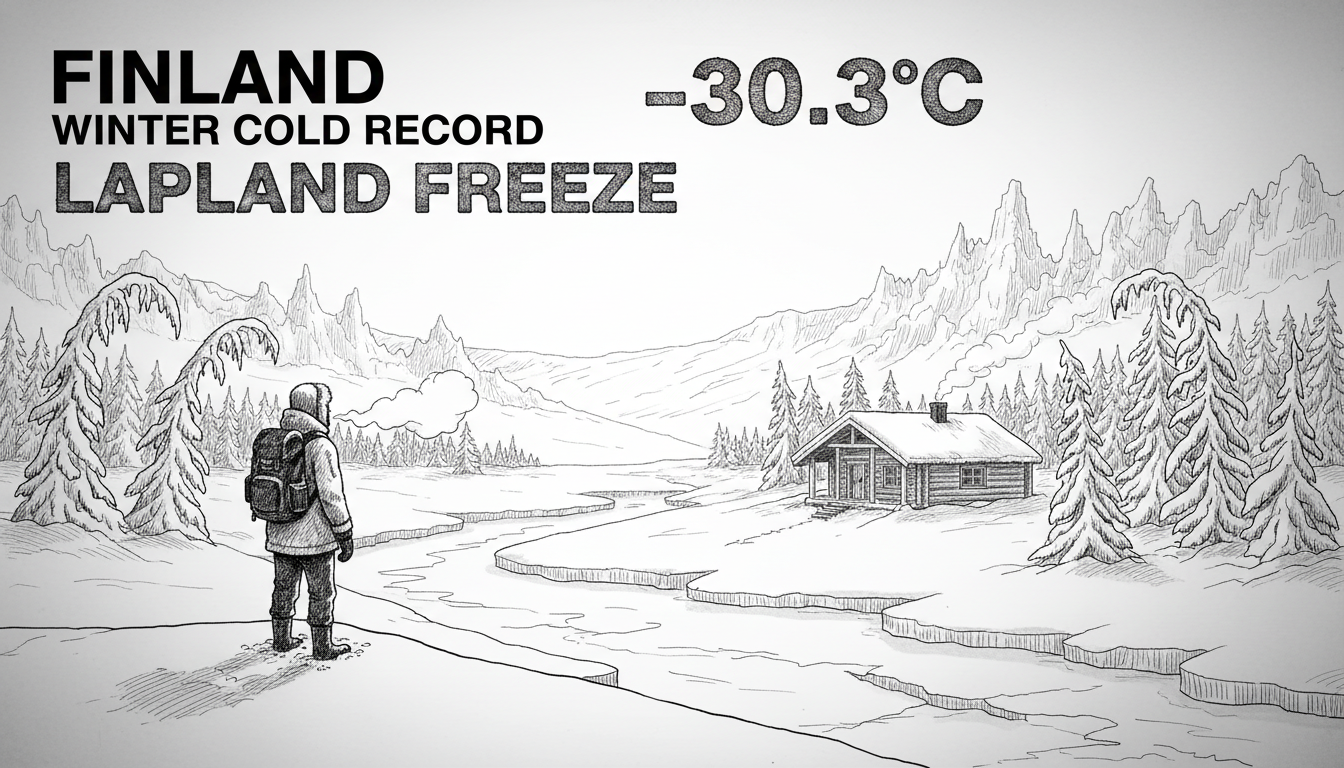Finland's winter cold record has broken for the second time this week. Kittilä Airport in Lapland recorded temperatures plunging to -30.3°C on Thursday evening. This measurement comes from the Finnish Meteorological Institute. The extreme cold creates dramatic temperature contrasts across the Nordic nation.
The previous record stood at -29.5°C from Monday in Sodankylä. Both locations sit in Finnish Lapland, known for its harsh winter conditions. The region regularly experiences Europe's coldest temperatures during winter months.
Northern Finland now battles severe freezing conditions while southern and central regions experience milder weather. These areas hover around zero degrees Celsius or slightly above. The meteorological institute confirms this weather pattern will continue through the weekend.
Such temperature extremes demonstrate Finland's challenging climate geography. The country spans over 1,100 kilometers from north to south. This creates vastly different climate zones within one nation. Lapland's arctic conditions contrast sharply with the more temperate coastal south.
Extreme cold warnings remain in effect for northern regions. Residents take extra precautions during such deep freezes. They protect plumbing systems and ensure proper winter clothing. Vehicles require special anti-freeze measures in these conditions.
Finnish authorities monitor the situation closely. They provide regular updates about road conditions and public services. The deep freeze affects transportation and daily life across Lapland. Yet Finns generally handle such conditions with practical preparedness.
This record-breaking cold occurs during a winter that has seen unusual temperature fluctuations. Climate scientists note increasing volatility in Nordic winter patterns. While this particular cold snap sets records, overall winter temperatures in Finland show a warming trend over decades.
The current weather system demonstrates how Arctic air masses can dominate Northern Europe. These conditions typically result from high-pressure systems over Scandinavia. They push frigid air southward from the Arctic region.
Local tourism businesses in Lapland adapt to the extreme conditions. Some winter activities continue normally while others require adjustments. The famous Northern Lights remain visible during clear, cold nights like these.
Emergency services remain on alert during such temperature extremes. They respond to weather-related incidents and check on vulnerable residents. Finnish society demonstrates its resilience in facing nature's challenges head-on.

